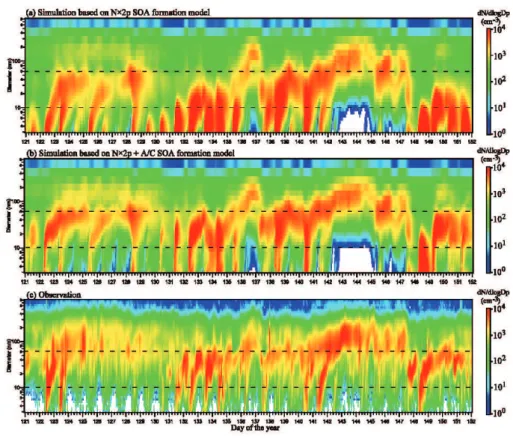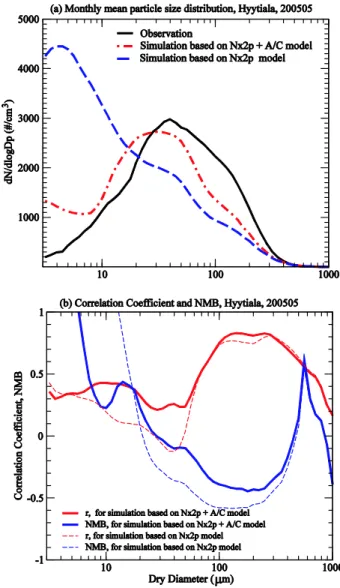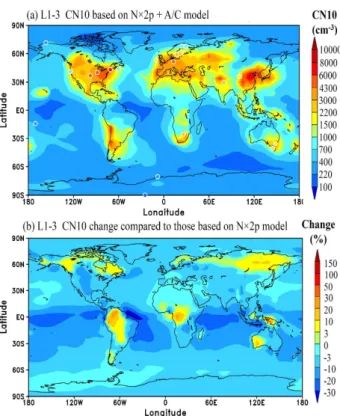A secondary organic aerosol formation model considering successive oxidation aging and kinetic condensation of organic compounds: global scale implications
Texto
Imagem


![Fig. 3. Horizontal distributions (averaged over first seven model layers above Earth’s surface: 0–1 km) of annual mean values of (a) H 2 SO 4 gas concentration ([H 2 SO 4 ]), (b) LV-SOG concentra-tion [LV-SOG], and (c) ratio of [LV-SOG] to [H 2 SO 4 ]](https://thumb-eu.123doks.com/thumbv2/123dok_br/18351292.353072/8.892.472.807.96.637/horizontal-distributions-averaged-layers-earth-surface-concentration-concentra.webp)

Documentos relacionados
(2011a) have simulated organic aerosol concentrations using the WRF- CHEM model in Mexico City during the same period as this study, and found that, with the contribution of glyoxal
number of size bins, size structure method, coupled or uncoupled condensation, the volatility basis set (VBS) or traditional 2-product model for secondary organic aerosol formation,
In summary, the findings trace and quan- tify at least two independent sources originating biogenic secondary organic aerosols in Hyyti¨al¨a through oxidation and
The secondary organic aerosol (SOA) module in the MOZART-4 global chemical transport model was updated by replacing the existing two-product (2p) parameters with those obtained
Secondary organic aerosol formation from photochemical aging of light-duty gasoline vehicle exhausts in a smog chamberT.
Simulated aerosol size distributions are in reasonable agreement with obser- vations in the marine boundary layer and in the free troposphere, while the model underestimates
The results could be used as input of information for retail supermarket, in improving consumer purchase decision on organic vegetable products, through an increase
The measured aerosol mass concentration in the chamber as a function of time and the wall losses corrected SOA mass concentration (for w = 1) (Exp. The shaded part indicates the


